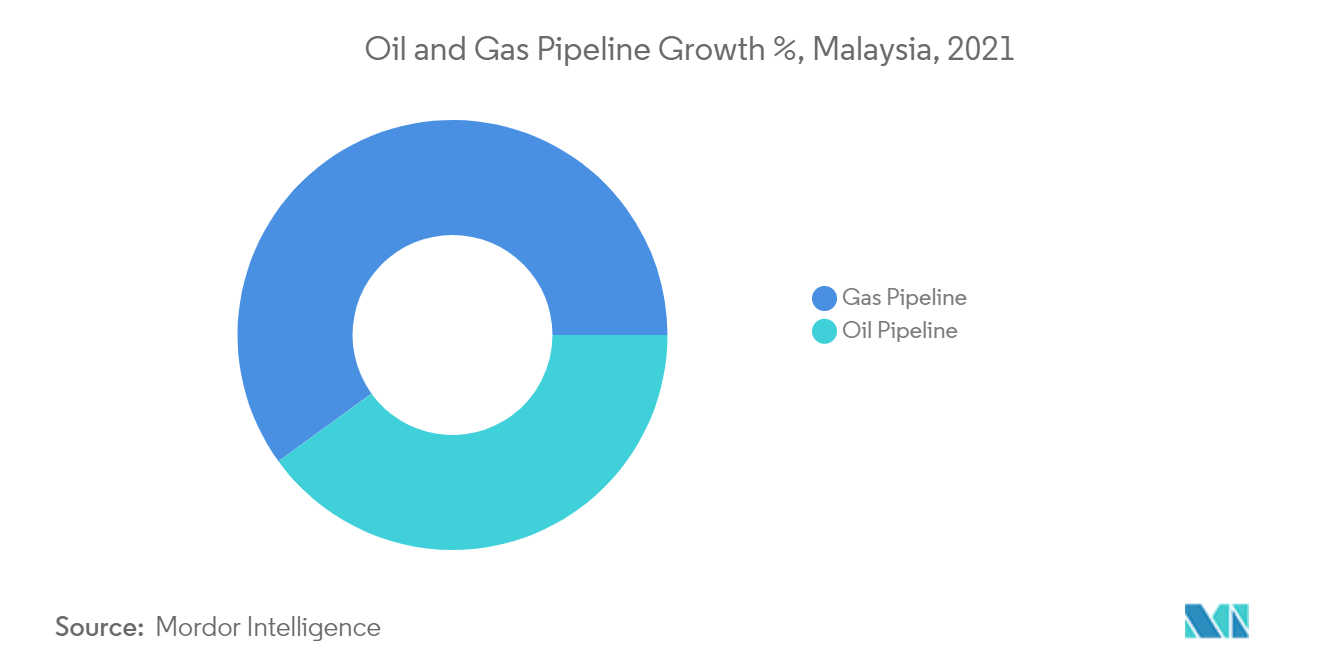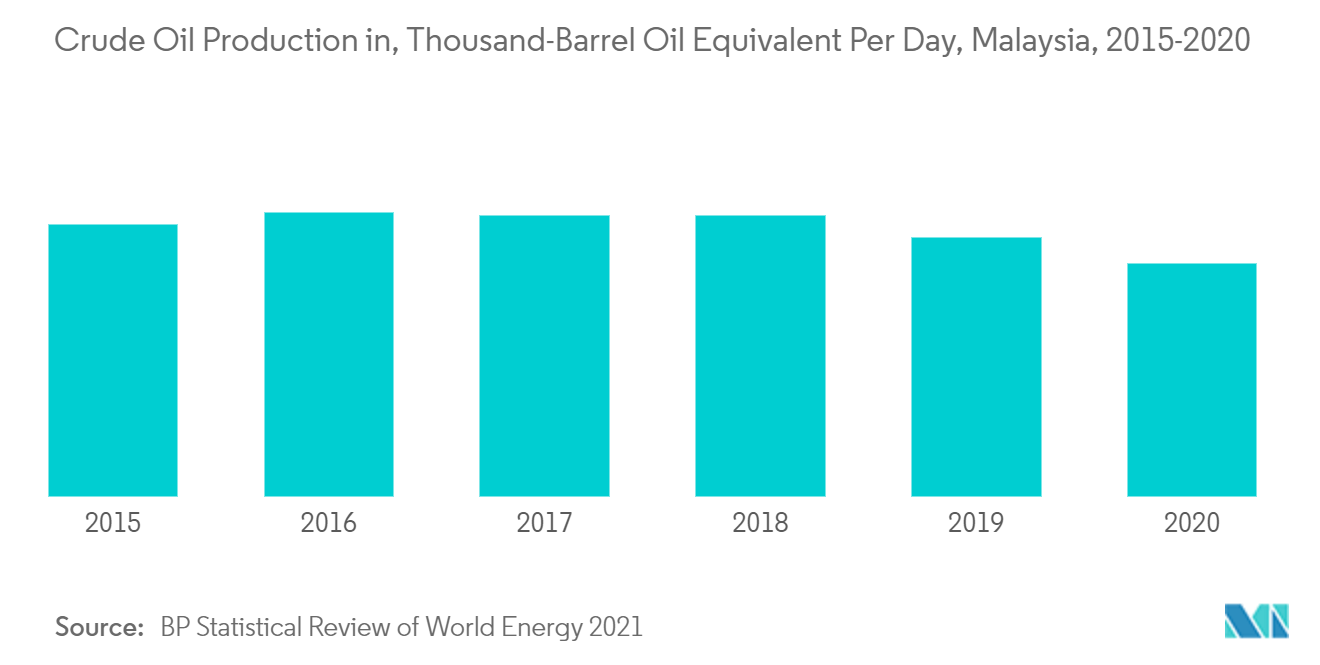Market Trends of Malaysia Oil and Gas Pipeline Industry
This section covers the major market trends shaping the Malaysia Oil & Gas Pipeline Market according to our research experts:
Natural Gas Pipeline Segment is Expected to Witness Significant Development
- Malaysia has one of Asia's most extensive domestic natural gas pipeline networks. According to the Energy Information Administration (EIA), it has a length of 1530 miles as of 2021 to meet the domestic demand for gas in Malaysia. Most of the natural gas pipeline network is located in Peninsular Malaysia and is known as the Peninsular Gas Utilization (PGU) pipeline network. After processing, the PGU network transports natural gas to Petronas customers in the power and non-power sectors.
- However, limited gas distribution coverage exists in much of Malaysia's Sarawak and Sabah states. Major pipelines in Sabah and Sarawak transport natural gas from their offshore fields to power plants for power generation or to LNG terminals for export. The limited availability of the pipeline network has been a significant cause of the limited utilization of natural gas in these regions. Gas Malaysia Berhad, the company responsible for domestic gas distribution, emphasizes increasing the pipeline length in these areas to promote gas consumption. The investment in the distribution infrastructure is likely to boost the growth of the Malaysian natural gas pipeline market.
- Further, in February 2021, Petronas Gas, a subsidiary entity of Petronas, started constructing the 42 km gas pipeline from the existing Peninsular gas utilization (PGU) to a power plant in Selangor. The projected pipeline cost is approximately USD 127 million and expects to be commissioned in the first quarter of 2023, which is expected to witness a significant development during the forecast period.
- Moreover, in December 2021, Petronas signed two oil and gas investment agreements in Malaysia. One agreement is a memorandum of understanding (MoU) with Petroleum Sarawak Berhad (PETROS) relating to a staggering increase of gas supplies to Sarawak, eventually raising the allocation to 1.2 billion cubic feet per day. Another is a commercial agreement with the Sabah state government to develop Sabah's oil and gas industry. These agreements are expected to boost the country's natural gas pipeline market.
- Therefore, based on the abovementioned factors, the natural gas pipeline is expected to significantly develop during the forecast period.

Decreasing Oil and Gas Production to Restrain the Market
- The Malaysian government has focused on amplifying hydrocarbon production through soaring investment in the upstream industry. However, implementing this strategy is challenging due to the decline in production due to the lack of developed new oil and gas fields.
- In 2020, Malaysia's crude oil production decreased to 596,000 barrels per day (B/D) from 663,000 (B/D) in 2019. Similarly, natural gas production declined to 73.2 billion cubic meters (bcm) in 2020 from 79.3 bcm in 2019. Also, the natural gas demand decreased to 38.2 bcm in 2020, down from 46.8 bcm in 2019.
- The country's decline in oil and gas production comes from the maturing fields, particularly its larger fields in the shallow waters offshore of Peninsular Malaysia, which is a restraint for the country's oil and gas pipeline market.
- PETRONAS wants to attract new investment for smaller, marginal fields and reverse production declines by using enhanced oil recovery (EOR) techniques to offset the decline in production.
- Further, the country has a relatively limited oil pipeline network. The country mainly relies on tankers and trucks to distribute petroleum products onshore. The oil product pipeline runs from the Dumai oil refinery in Indonesia to the Melaka oil refinery in Melaka City, Malaysia.
- Thus, the oil and gas pipeline industry is restrained due to decreasing oil and gas production scenarios. However, over the forecast period, a rise in oil and gas consumption, along with growth in investment in the sector, is expected to drive the market.


